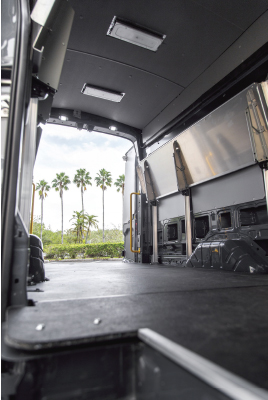
Thousands of van drivers and technicians were feeling the heat this past summer. A record-breaking heatwave blanketed many countries, challenging industries’ productivity in many areas, and worker safety everywhere.
When temperatures are so hot that it leads to driver fatigue and even death, something must be done to prevent this from happening again.
Were the drivers dehydrated? Did the AC in their vehicles not work? Were they overworked in the heat? Every situation is different, but the point is, if you are a fleet manager, you are likely feeling the heat now to do whatever you can to make sure your drivers are as comfortable as possible.
IMPROVE DRIVER COMFORT IN 3 WAYS
1. Hydration and Their Day Schedule
A recent study showed that most adults admit they do not drink near enough water every day. One health adviser said it is important that you drink more water than normal when it’s hot as your body is losing liquids at a higher rate. Perhaps drinking enough water on an extremely hot day is something we expect most adults to do as a matter of responsibility for their own health.
As drivers are expected to highly perform all day with telematics tracking their every move, they would rather keep working on the road rather than make a stop for water when they need it. Along with extreme heat outside, a couple missed water stops can lead to dehydration, fatigue, and even death.
This means scheduling one less delivery per driver every day in the summer months. Yes, one less delivery means less profit. However, assuring the overall health and safety of your drivers on the road means higher driver retention and increased overall productivity.
It could even be something as simple as a message to drivers giving them re-assurance that water stops are allowed. Or a program where water is provided at every dispatch during the summer months, could go a long way.

2. Dress Code
Drivers wearing uniforms ensures brand consistency, especially when your vehicle fleet is spread out across the country. However,, moving into hotter temperatures, how much do your drivers’ uniforms change, or do they just keep wearing the same uniforms? OSHA recommends workers to wear lightweight, light-colored, loose-fitting clothes.
Could you consider changing the dress code slightly during summer periods where temperatures tend to get out of control? You make your policy more flexible during this time, where they can choose what they want to wear if new uniforms cannot be provided. If the vehicle they are driving is branded, your brand will still shine.
This is just another idea to make your drivers as comfortable as possible. If they are choosing what they are wearing during their day on the road, chances are they will feel better, be even more productive, and most importantly, be comfortable in the heat.

3. Insulating Cargo Space where Drivers Work
Insulating your vehicles’ cargo space with insulated wall, ceiling, and door liners in your fleet van builds will have a big effect on reducing the temperature where your drivers work and collect cargo. This is not a quick fix if your vans are already on the road. However, before your next vans hit the road for your drivers to use, consider adding these products to your van builds.
Insulated ceiling liners play a critical role in temperature control by creating a thermal barrier as the sun beats down onto the vehicles. Insulated wall liners also create a thermal barrier, especially when paired with a ceiling liner. Adding a rigid floor to the base of your upfit mitigates heat from the road, and together with a ceiling and wall liner, enhances the cargo space’s ability to manage extreme temperatures drastically.
Earlier this year, North America’s largest last-mile delivery logistics fleet reached out to Legend Fleet to develop a solution to deal with the surging temperatures experienced in their delivery vehicles.
After several months of product-in-vehicle testing in Phoenix and Houston, we created a solution of heat-mitigating products that reduces their cargo space interior temperature by up to 20°F.
For More Information
If you’re looking to mitigate heat in the cargo area of your vehicles, and to learn more, visit www.legendfleet.com.




